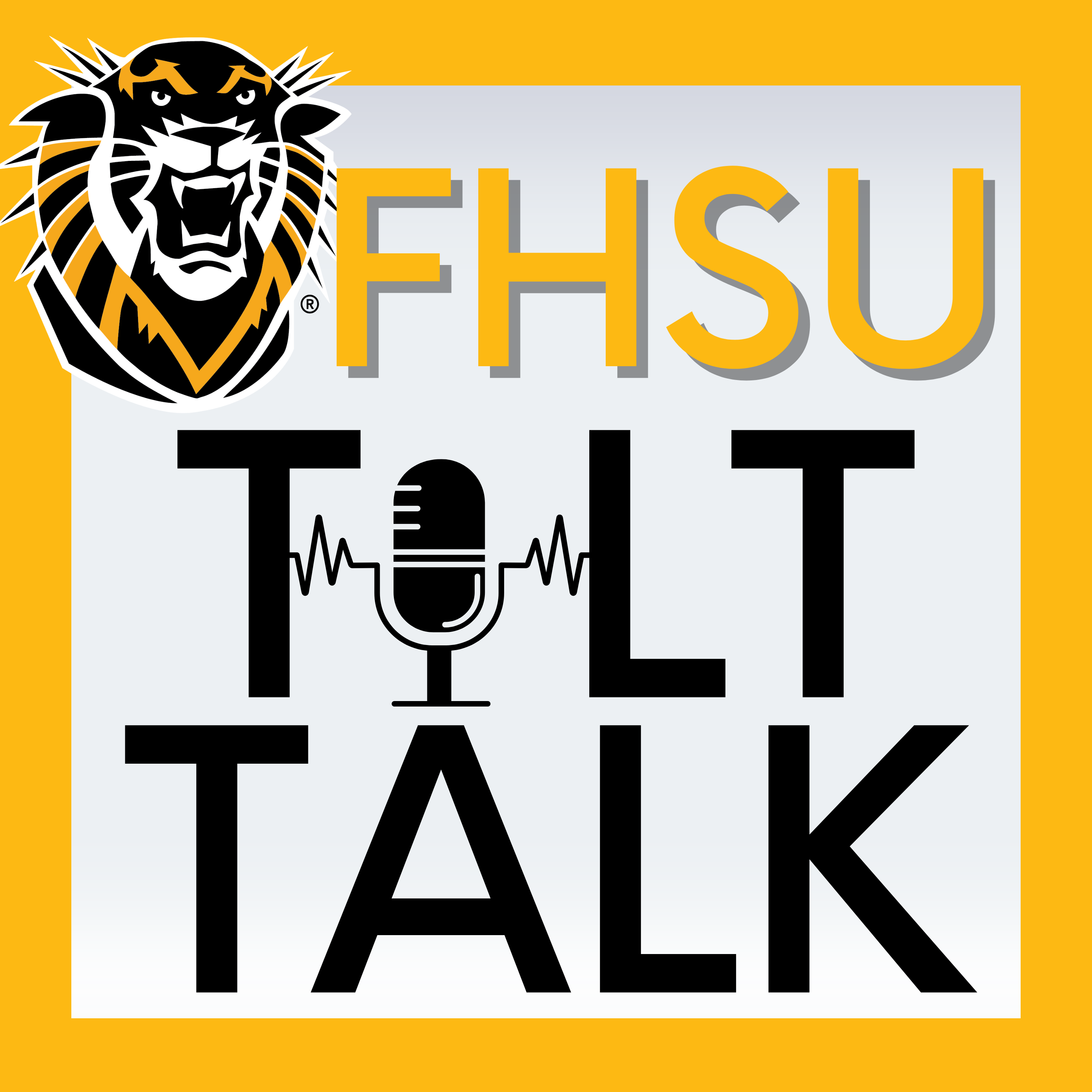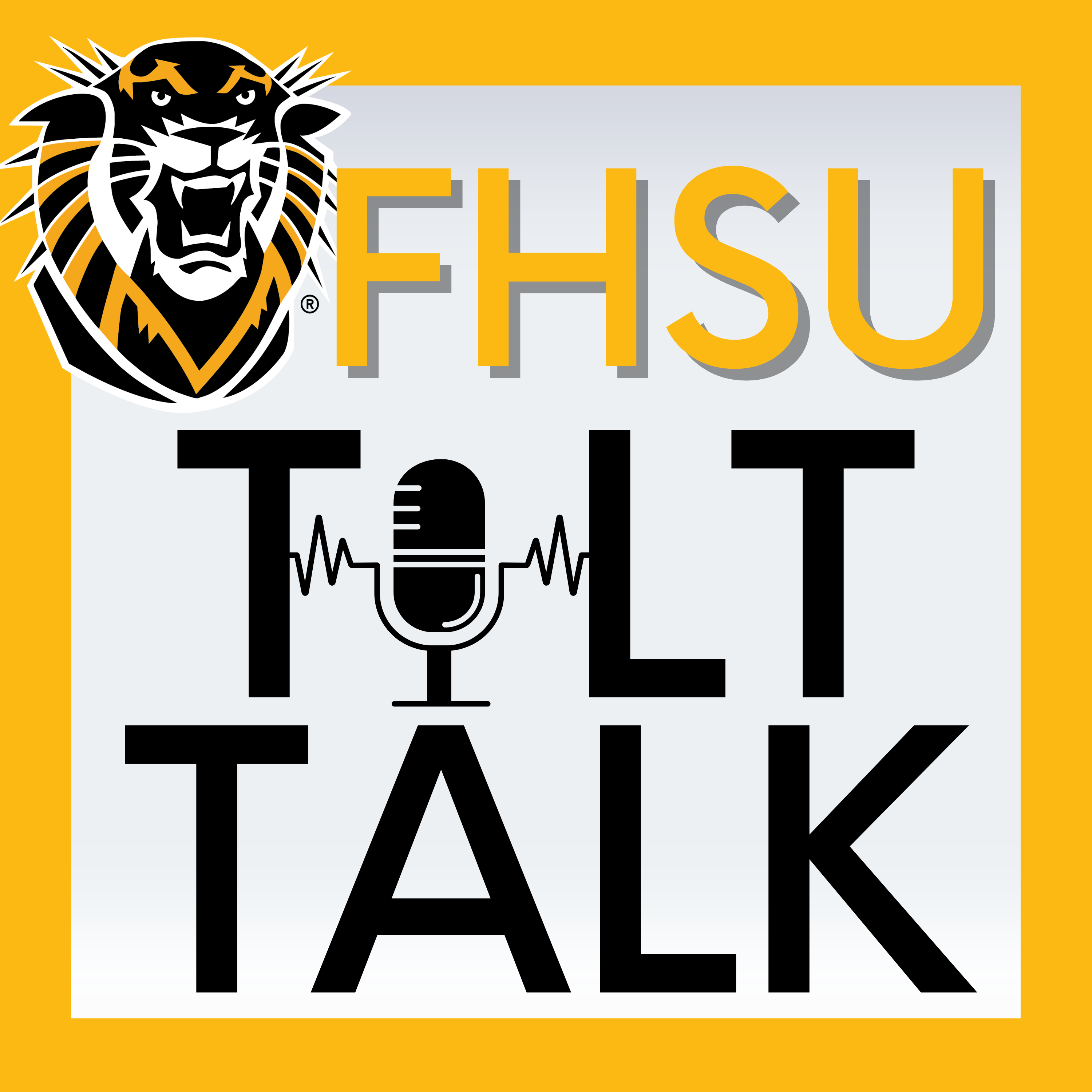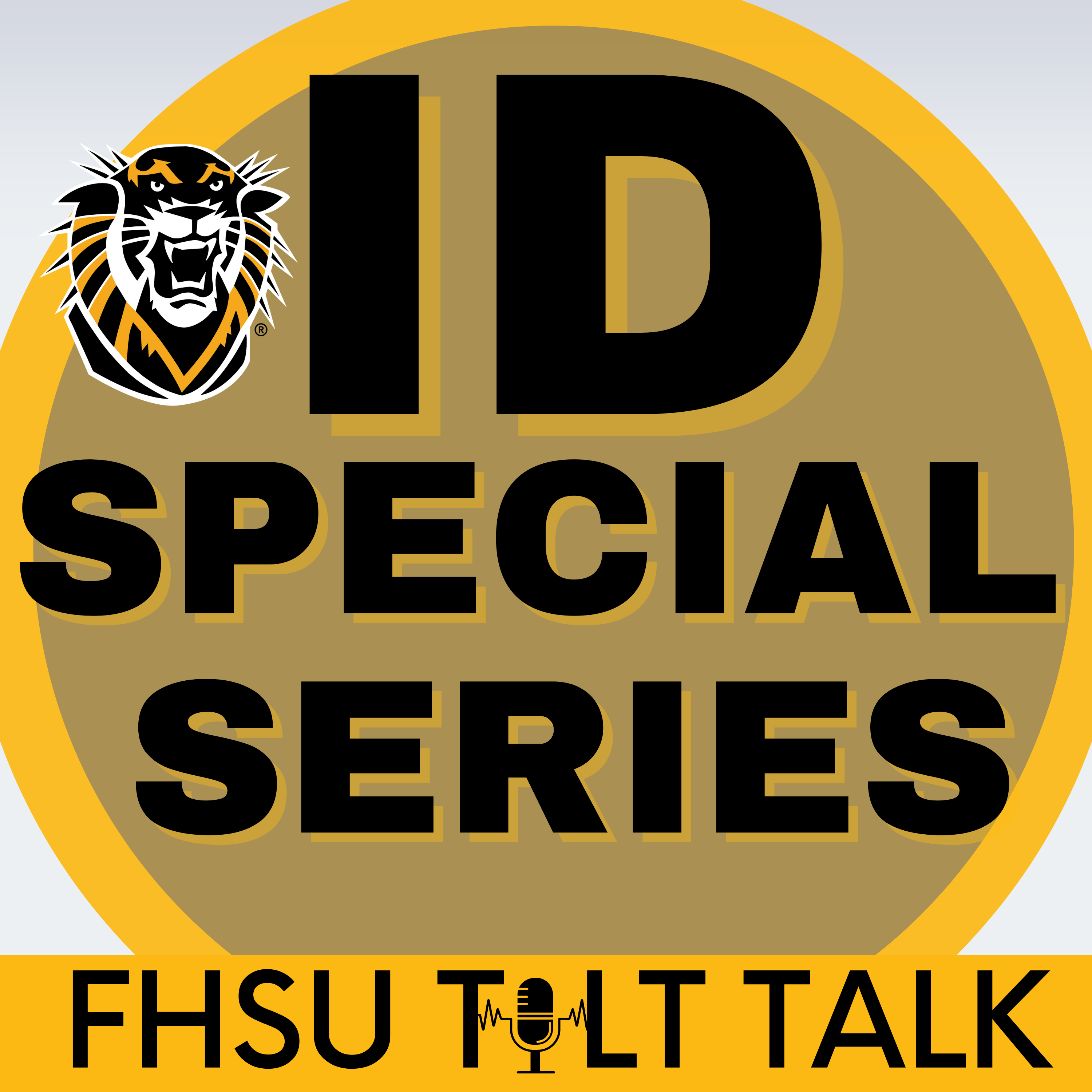Episode Transcript
[00:00:00] Speaker A: Welcome to FHSU Tilt Talk, a podcast about educational technologies, teaching and learning, scholarly research and service, hosted by teaching innovation and learning technology staff.
Hello listeners. Today we have a special episode for you. As I sit down with Provost Jill Arnsdorf, we will delve into the three academic affairs priorities for the 24 25 academic year, how our community fits in, as well as how it connects to the university strategic plan. Thanks for being here. Let's get into the episode.
Welcome everybody. My name is Dani Riley and I am an instructional designer with teaching, innovation and learning technologies department over at Fort Hays State University and I'd like to welcome a special guest today on our podcast episode and I'll have her introduce herself.
[00:00:52] Speaker B: Thank you Danny. My name is Jill Arnsdorf and I currently serve as the provost and vice president for academic affairs at Fort Hay State University here in Hays, Kansas. I have served in the role for I'm in my 6th year serving in the role and just really delighted to be with you here today.
What I wanna talk about today are a little few more details about the 24 25 academic affairs priorities.
[00:01:18] Speaker A: Can you tell me a little bit about what your intentions for recording a separate podcast on this topic was for?
[00:01:25] Speaker B: Yeah, so I really so I introduced these priorities at the fall convocation in August and always feel like people deserve a little bit more context around the priorities. And so this podcast will hopefully do that for folks and allow them to better understand the priorities from my perspective and how they might see themselves and their work within the priorities in academic affairs.
[00:01:51] Speaker A: Why has it been so important to identify priorities within the academic affairs each year, and what process did you use to determine these priorities last year it.
[00:02:02] Speaker B: Was evident to me that it was important to start creating a little bit more focus on our work in academic affairs in alignment with the university strategic plan.
So in 23 24, we had a set of three academic affairs priorities that were introduced about this time last year.
The president articulates in the fall convocation the strategic plan initiatives and the mission and the vision of the institution. And this is never to supersede those, but to really align with the university strategic plan and the priorities worked fairly well last year to help people align their work in academic affairs with priorities in academic affairs. So I thought, let's do this again this year as another experiment. And so over the last, actually over summer and even into the fall a bit, my direct reports, which is academic counsel and a strategy team in academic affairs, worked together to create and tweak the priorities from last year to introduce them for this year as the 24, 25 priorities. And again, these are not meant to supersede the plan, the strategic plan, in any way, but really to align and give focus to our collective work this year in academic affairs.
[00:03:25] Speaker A: So I'm really interested to know a little bit more about which one of the three priorities, what they are, and if you could tell me a little bit more about them.
[00:03:33] Speaker B: Sure can. The first one, and I'll just go through the three real quick, and then I'll go back to the first one and delve a little deeper into some details around that one. Priority one is to unify around a results oriented culture. Priority two, building community within and outside the university, and priority three is to develop a strong data acumen. These sound probably very similar to folks if they were familiar with the priorities last year, and that was intentional with some nuanced changes, because our academic affairs team felt like it was important to keep the momentum gained from last year's priorities and not just switch things up completely, especially since our strategic plan was changing this year as well. So the unifying around a results oriented culture, this is driven by individual, unit level, and even university level results. And so while it might be frustrating to hear the way that I've been talking about this priority to multiple people in multiple avenues is the results are not going to be determined by me, they're not going to be determined by the university president. And in most cases, these are results that individuals and units get to define for themselves.
And I hope that unification can come around those results. So this could look a lot of different ways. It could look like completing a strategic plan in your unit that aligns with the strategic plan of the university. It could look like completing a project that you as an individual have been working on for a few months or even a few years. It could be introducing a new concentration area or a new program to deliver to students. It could be changing a culture. All of those things are results oriented.
That's the mindset that I want folks to be having in academic affairs is what can I, what can we collectively be doing to create results that look best for us at Fort Hayes State University?
Some things that I'm specifically focusing on around results this year are our internal program review process.
So you've heard me talk a lot over the last few years about both the Kansas Board of Regents process for program review and our internal program review process. And it was time last year to look at our internal process and revise it, to not only align with the KBOR process, but also, Danny, to allow people to share results in new and creative ways, not only within the KbOr framework, but outside of that as well. So this fall, we're launching our new program review process.
Thanks to many, many people across the institution that have been working on that process over the last year. We'll be launching that process, that new process this fall and be ready for the next KBOr program review cycle in a couple of years. So I'm really looking forward to our whole process giving people a new way to think about results at Fort Hay State University, specifically in academic programs.
A second item that I've mentioned in talking about results with various folks this fall is really thinking about our individual roles as university citizens and how our individual work, our individual roles and responsibilities fit into the bigger picture of the university we get. And I'm going to speak for myself. I get caught up in my day to day so often and getting through those emails and those meetings, and often need to remind myself, to reflect on, okay, how is my individual work fitting into the bigger picture of the institution? And where might I be falling short? And where might I be using my strengths? And so, thinking of ourselves as university citizens, I think can help us remind us of our mission and our reason for being here. And collectively, perhaps be better about results that are important to us as individuals, but the collective good as the institution. Does that make sense, Danny?
[00:08:03] Speaker A: Yeah, absolutely.
[00:08:04] Speaker B: Okay, so priority two is around building community within and outside the university.
There was some intentional addition of words here this year, because last year this priority was really focused on community engaged work and focusing external. And that's still so important to our mission at Fort Hay State University.
So I'll talk a little bit about the outside the university first, and then I want to come back to the within and why that was added.
Last year, we completed and were recognized as one of the, actually the first institution in Kansas to earn the Carnegie classification of leadership for a public purpose. That was exciting for our institution, and now we need to work to leverage that classification. So that's a priority within this priority, too.
Another priority within this for me is focusing on completing our Carnegie application for our community engaged classification. We have held that classification before at Fort Hays State University, and because so much of our work as a regional comprehensive institution is focused on community partnerships, economic development, workforce development, how to be good citizens in our community of Hays and beyond, that work is still very important to us. And so keeping that priority of focus was important to not only me, but the academic affairs team who worked on these priorities.
The reason why the word within was added this year is myself and I think some of my colleagues were feeling a sense of need to focus on building community within the. Just four years ago, we were all working from home at this time, and we've come out of the pandemic, and we've refocused, I think, on community in a different way. And so really thinking about not only within academic affairs, but across the institution, how do we work with one another? How do we just develop positive working relationships across campus, across the institution, with people that are perhaps working remotely or at our partnerships in China and Cambodia and elsewhere across the globe? So just being very intentional about building community within the institution as well as outside the institution, both are important, and so that's why both are in the priority this year.
Okay, so the last priority is developing a strong data acumen. This is connected to, really, the first three strategic plan goals in the university. Strategic plan. Not only the old plan, but the new plan that was just launched recently.
Last year, we focused on creating tools for people to use to obtain data. And this year, most of those tools are now available.
And I want to challenge people, and I'm challenging myself in that same vein, to use those tools to make informed decisions about results. So those tools are things like the Gray Di platform. That is a platform that not everyone at the institution has access to. But our department chairs, deans, and other key academic leaders have access to that platform, which is essentially a program review and management platform that people can use to see what the market trends are in academic programs, see what our regional needs are, see what might be possible in terms of curricular changes and schedule changes in curricula. And so this is a really robust tool that we are just learning how to use. And I'm hoping by making this a priority again, that people will engage in ways that allow that data to be useful, and people will value that. Another example is some new dashboards that will be rolled out, I think, this month of October from our institutional effectiveness office.
That team has been working hard over the summer to create dashboards that will allow us to have data at our fingertips, that data that we report officially to the Kansas Board of Regents, as well as ipeds. That data will be available for department chairs and, quite frankly, anyone through a public dashboard that will allow people to use that, leverage that to create value in programs and value in decisions that we're making at the unit level and at the college level and the institution level. The last tool that I'll mention that was just recently launched that I know many faculty and staff are already using as well as students is EAB navigate. EAb Navigate is a platform that we launched here at the university this fall. It's part of actually the Kansas Board of Regents system platform. They're having all of the institutions and the regents system use that platform, and so it'll assist us with early alerts when students are struggling and getting them access to resources. It will also be eventually a tool that we can use to pull data in about how students are doing in courses when they might be getting tripped up on things so that we can better resource our staff and faculty to serve our students even better in all of our modalities at Fort Hay State University. So those are three tools that I'm excited about being launched that will allow us to not only understand and interpret data, but then to use that data in creating more value in the decisions that we're making as an institution.
[00:14:18] Speaker A: Well, thank you so much for sharing that as a staff member, a part of the community, somebody I specifically work remotely, I love how you incorporated that in our greater community, especially within that priority number two. But I'm wondering how my individuals, departments, units, programs, colleges, all of the above, and the teams see themselves in these priorities and how do they connect to the university strategic plan?
[00:14:44] Speaker B: Good question, Danny. I think that there are multiple ways that people could and should see themselves in the priorities. What I am not doing is using this platform or using these priorities to say, this is what you have to do. I think these priorities are broad enough that I hope, my hope is, my extreme hope is that people can see themselves at each of these, at whatever type of role they're in at the institution.
They're deliberately broad and deliberately vague. For some people, that's probably incredibly frustrating because they want to know, Jill, what are you thinking? What do you want us to do? And I'm just not going to do that.
I've given you some examples of how I see myself in the priorities and my role in the priorities. And so what I'm asking people to do right now is have intentional conversations in their department meetings, perhaps even as colleagues across divisions and across departments, of how do they see themselves and their priorities. I did that. I asked this question this week of some of my direct reports, and it was awesome to hear lots of them talking about ways that they're already seeing results manifest in their units, just with some key conversations. So they were talking about some program changes that were already coming about as a result of conversations last year and early fall, culture shifts happening in offices and departments, new processes to align resources, some examples even of strategic stopping. Some things that we've evaluated aren't working, and they take a lot of time and so stopping those to allow us to have time to do some other things. One specific example, there is a decision we made about something related to commencement a couple of weeks ago that we realized was taking a lot of time and energy and effort for a lot of people at this institution. And maybe we didn't need to be doing that anymore because we could better serve our students in another way. And so that's just a small example of a strategic stop that's happening in order for people to have more time and energy and resource to do other things that benefit students even more. So I'm not being overly prescriptive, but starting with those intentional conversations, listening, dialoguing, and by the end of this year, I hope we have a lot of great examples of results, folks, using data and then building community within and outside the institution.
[00:17:24] Speaker A: Anything else you want to add?
[00:17:26] Speaker B: You'd ask about strategic plan, and I think it's important again to say that these are not to supersede the plan in any way, but really align with I think I mentioned when I talked about priority three that goal themes one through three really connect there. Goal theme five connects to perfectly to priority two. And then I think you could make an argument or a case for all five goals fitting into results oriented.
Most of the goals are connected obviously to results. However, for academic affairs, I would say again, goals one, two, three and even five probably best connect to that results oriented culture, although I think you even make a case for all five.
[00:18:13] Speaker A: Wonderful. Well, thank you so much for sharing all of your insights on this and for giving the university something to look forward to.
[00:18:21] Speaker B: Yeah, thank you, Danny. I appreciate the time and energy that you've put forward in the podcast, and I hope as people listen to this and engage in discussions about the priorities, that this gets them thinking a little bit. And I'd be happy to talk with anyone further about the priorities at any time this year.
[00:18:41] Speaker A: Great. Thank you so much.
Thank you for listening to this episode of FHSU Tilt Talk. Subscribe on Spotify, Amazon and check us out on the Tigerlearn blog or the tilt social media pages for updates. We'll see you next time.


